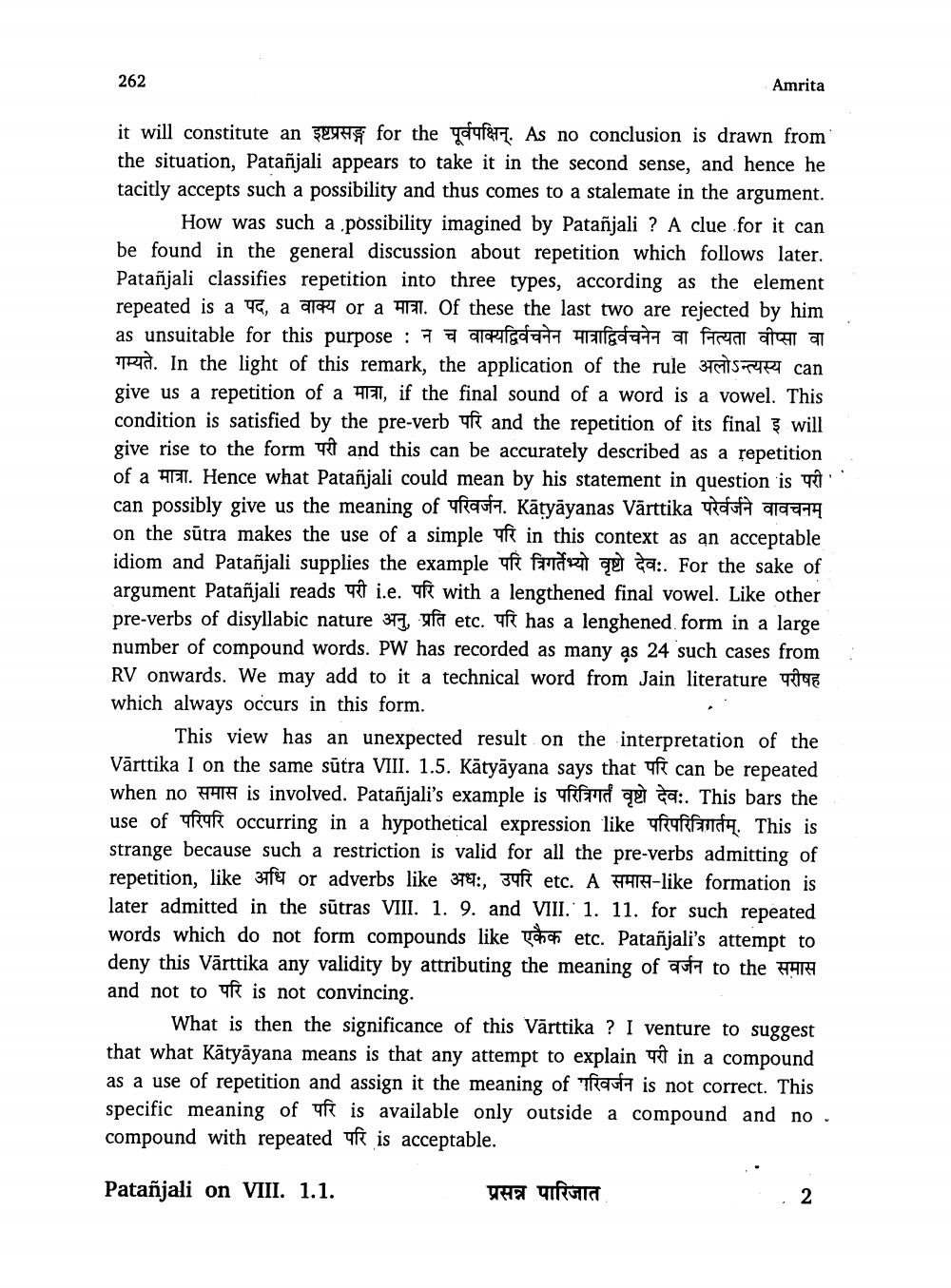________________
262
Amrita
it will constitute an şeyes for the yayfer. As no conclusion is drawn from the situation, Patañjali appears to take it in the second sense, and hence he tacitly accepts such a possibility and thus comes to a stalemate in the argument.
How was such a possibility imagined by Patañjali ? A clue for it can be found in the general discussion about repetition which follows later. Patañjali classifies repetition into three types, according as the element repeated is a पद, a वाक्य or a मात्रा. Of these the last two are rejected by him as unsuitable for this purpose : न च वाक्यद्विर्वचनेन मात्राद्विर्वचनेन वा नित्यता वीप्सा वा
red. In the light of this remark, the application of the rule 37615 paper can give us a repetition of a hill, if the final sound of a word is a vowel. This condition is satisfied by the pre-verb f and the repetition of its final 3 will give rise to the form and this can be accurately described as a repetition of a E. Hence what Patañjali could mean by his statement in question is can possibly give us the meaning of परिवर्जन. Katyayanas Varttika परेर्वजने वावचनम् on the sūtra makes the use of a simple in this context as an acceptable idiom and Patañjali supplies the example uf famosi e da:. For the sake of argument Patañjali reads i i.e. uf with a lengthened final vowel. Like other pre-verbs of disyllabic nature 371, ufa etc. uf has a lenghened form in a large number of compound words. PW has recorded as many as 24 such cases from RV onwards. We may add to it a technical word from Jain literature mine which always occurs in this form.
This view has an unexpected result on the interpretation of the Vārttika I on the same sūtra VIII. 1.5. Kātyāyana says that u can be repeated when no is involved. Patañjali's example is id qe da:. This bars the use of परिपरि occurring in a hypothetical expression like परिपरित्रिगतम्. This is strange because such a restriction is valid for all the pre-verbs admitting of repetition, like अधि or adverbs like अधः, उपरि etc. A समास-like formation is later admitted in the sūtras VIII. 1. 9. and VIII. 1. 11. for such repeated words which do not form compounds like Tanah etc. Patañjali's attempt to deny this Vārttika any validity by attributing the meaning of वर्जन to the समास and not to yf is not convincing.
What is then the significance of this Vārttika? I venture to suggest that what Kātyāyana means is that any attempt to explain it in a compound as a use of repetition and assign it the meaning of Taufa is not correct. This specific meaning of ufis available only outside a compound and no compound with repeated f is acceptable.
Patañjali on VIII. 1.1.
प्रसन्न पारिजात
2




